Pregnancy and parenthood are overwhelming even in the most ideal circumstances. For some, the time before a baby arrives is spent choosing the right stroller or figuring out how to install a car seat. But for parents without stable housing or income, the stakes are higher. Every decision feels critical: rent or diapers, formula or gas, all while trying to get enough nourishing food to support a healthy pregnancy.
For 36 years, Homeless Prenatal Program (HPP) has helped lighten the load for expecting parents by providing the tools and support they need to build healthy, stable families. Located in San Francisco’s Mission District, HPP connects pregnant people and their partners with parenting classes, case management, housing support, and fresh groceries through a long-standing partnership with the San Francisco-Marin Food Bank.
For many staff members, the work is deeply personal.
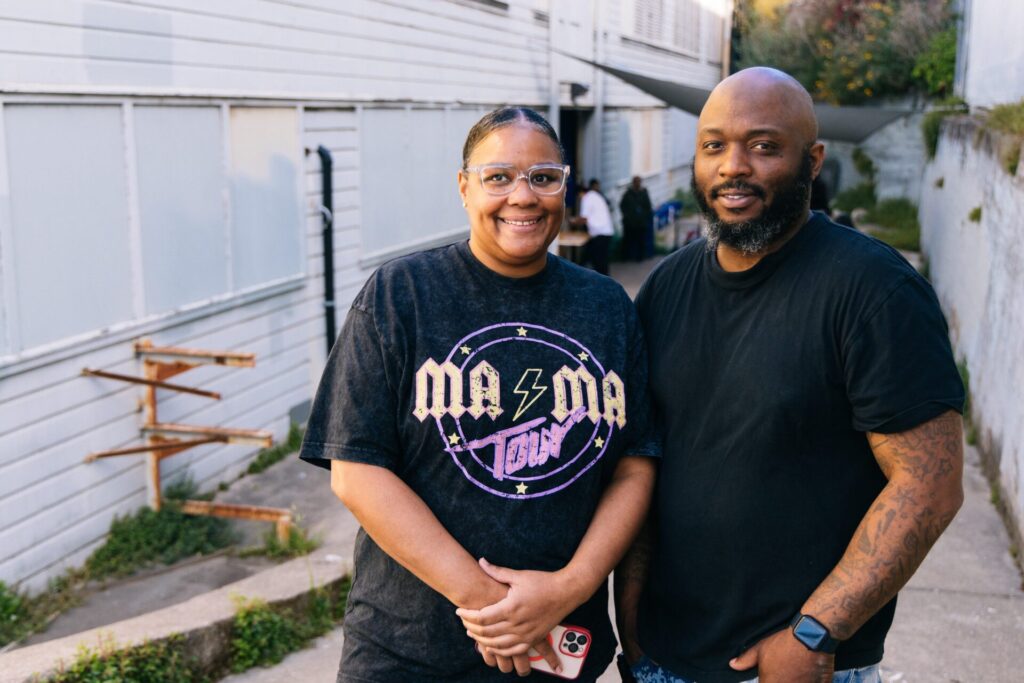
“My journey started here,” declares Mike Brown, a Community Staff Member at HPP. “I used these services before, and now I’m able to give back. I owe it.”
Mike oversees the same pantry line he once stood in as a kid. His connection to the Food Bank goes back decades, to when his mom turned to HPP for support while raising him on her own and trying to get by during unemployment.
“My mom had me young,” he says. “So we basically grew up together.” He remembers the palpable relief of leaving the pantry with food. It’s why he admires his mother for the strength it took to ask for help, and why he understands how much that support means to families.
“Whether it’s a bag of rice or the eggs this week, it’s all very necessary,” Mike says. “It may be just some carrots and some radishes, but that goes a long way when you have nothing.”
As Mike shares his story, Rashawna nods in agreement. She found HPP in 2009, when she was pregnant and full of questions. “Back then, there were not many mom classes available,” she recalls. “[HPP] had the support I needed.”
Through breastfeeding education and peer support, she was able to prepare for her growing family. And with crucial access to fresh produce and pantry staples from the Food Bank, she built a stable foundation for her and her child.
“It was feeding me, it was feeding my children. It was putting food in the household,” Rashawna says. “When you don’t have that money to make ends meet, then you have the food [from the Food Bank] to rely on. Even if you’re vegetarian, you can make a really good meal.”
The support she received was transformative, and Rashawna is now an intern in HPP’s paid community health worker apprenticeship. “I was a client,” Rashawna says, “and now being able to give back is a wonderful opportunity.”
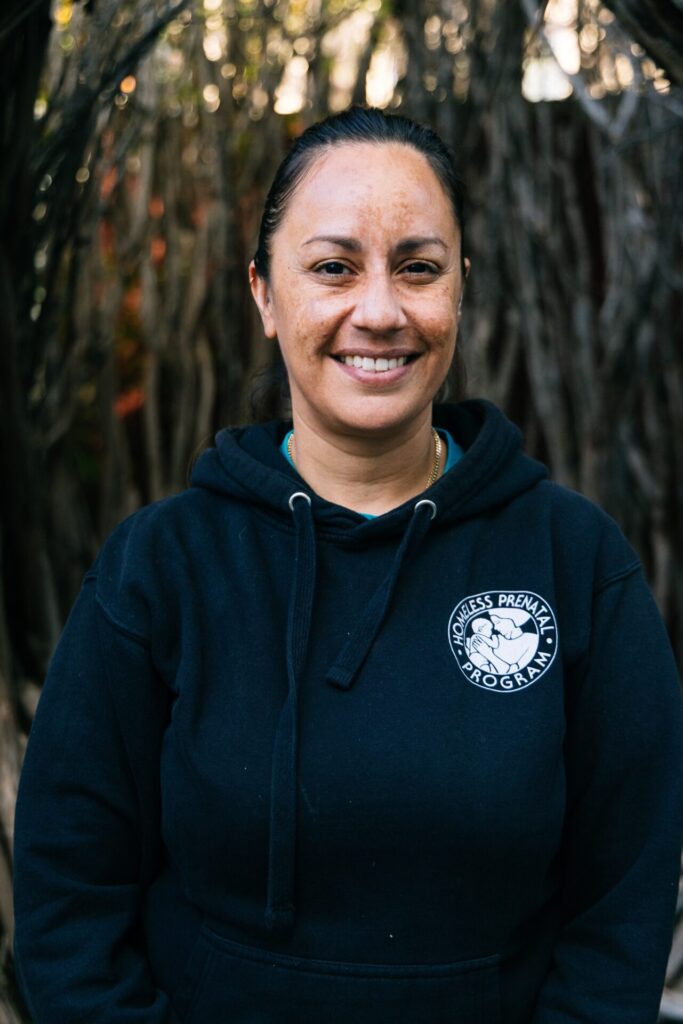
Linda has spent 12 years on HPP’s operations team, helping run the Food Bank’s weekly food distributions. She says stories like Mike’s and Rashawna’s show just how powerful the partnership between HPP and the Food Bank really is. “What’s special about Homeless Prenatal is serving the community and seeing all these beautiful little children thrive,” she says. “It takes a village to raise a child, but it takes a village to raise a community. This is it. This is the village.”
But with shrinking budgets and looming cuts on all levels of government, she’s worried about how much support HPP will be able to provide. And Food Bank contributions are more essential than ever.
“Right now, San Francisco-Marin Food Bank is our only source of fresh fruits and vegetables,” Linda says. “Due to the budget cuts, we no longer have different resources… we rely on the Food Bank.”
She remembers when HPP could assemble Mom Boxes filled with peanut butter, rice, beans, apples, and chicken. They’d then supplement them with Food Bank extras to round out the meal. But those boxes are no longer possible. “Now we’re just giving Food Bank food,” Linda says. “People are thankful, but it’s hard to see a mom walk away without a bag, especially when she’s picking up right before school drop-off.”
That strain isn’t unique to HPP. Across the Food Bank’s network, staff and volunteers are bracing for what comes next. Lucia Ruiz, a Senior Program Manager at the San Francisco-Marin Food Bank, hears that uncertainty every day.
“We don’t know yet exactly how federal budget cuts are going to affect us, but we do expect there could be fewer of certain items coming in,” she says. “What we do know is that we’re incredibly grateful for the support of donors and community members — it’s what allows us to keep these programs going.”
Lucia says it’s that sense of community and commitment to showing up for each other that will carry partners like HPP through these uncertain times
“This pantry is more than a food distribution site,” she says. It’s a trusted hub where families get groceries, diapers, and other essentials,” she says. “Even during the pandemic, they kept their doors open. That tells you what kind of community this is.”


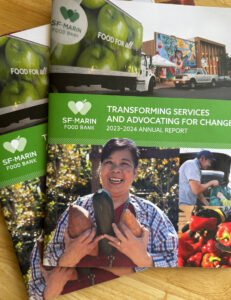 Jean Baker has a joyful smile and ebullient spirit, and both seem to shine prominently on the cover page of the Food Bank’s 2023-24 Annual Report. Now retired, and focused on family and her faith, for years Jean served as a steadfast connection between the Food Bank and participants who came to a food pantry at her church in the Mission District in San Francisco.
Jean Baker has a joyful smile and ebullient spirit, and both seem to shine prominently on the cover page of the Food Bank’s 2023-24 Annual Report. Now retired, and focused on family and her faith, for years Jean served as a steadfast connection between the Food Bank and participants who came to a food pantry at her church in the Mission District in San Francisco.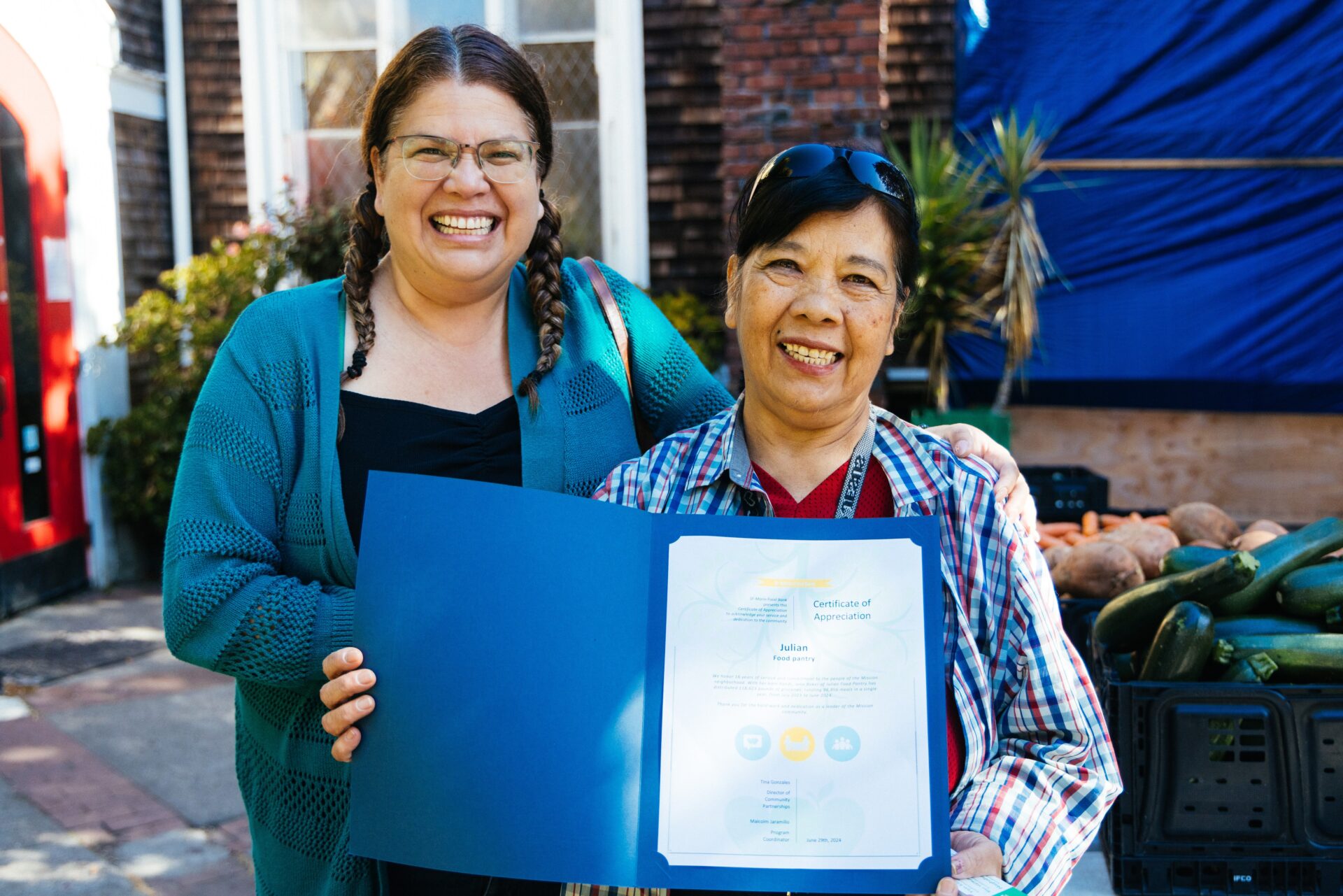
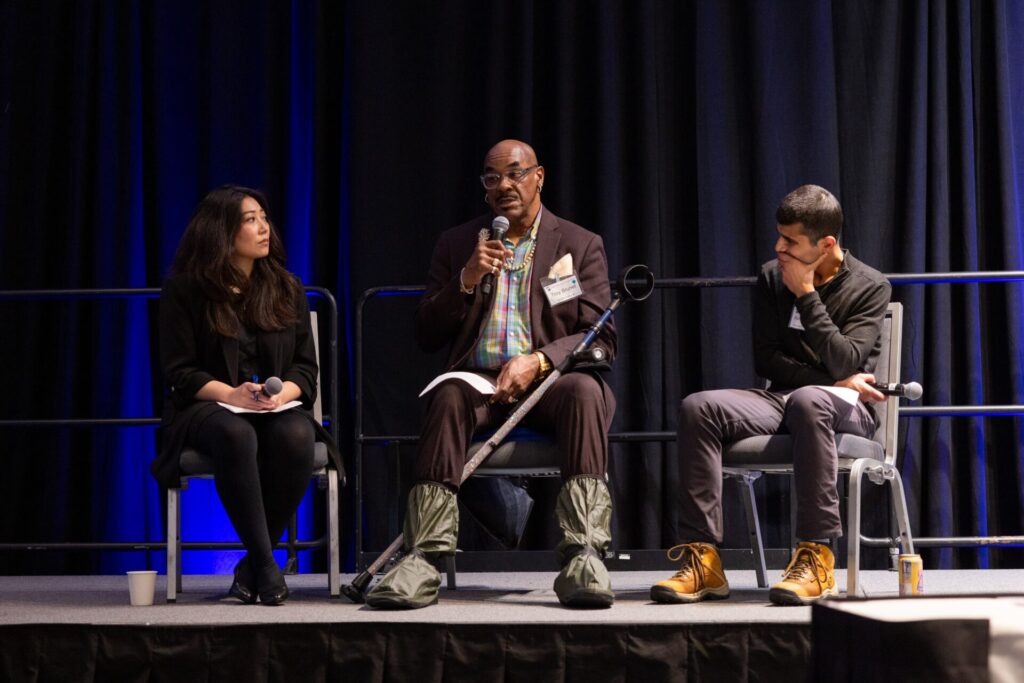 At the Food Bank, we know ending hunger means disrupting its root causes, which include poverty and housing instability. Real change is impossible if we don’t tackle these issues together
At the Food Bank, we know ending hunger means disrupting its root causes, which include poverty and housing instability. Real change is impossible if we don’t tackle these issues together 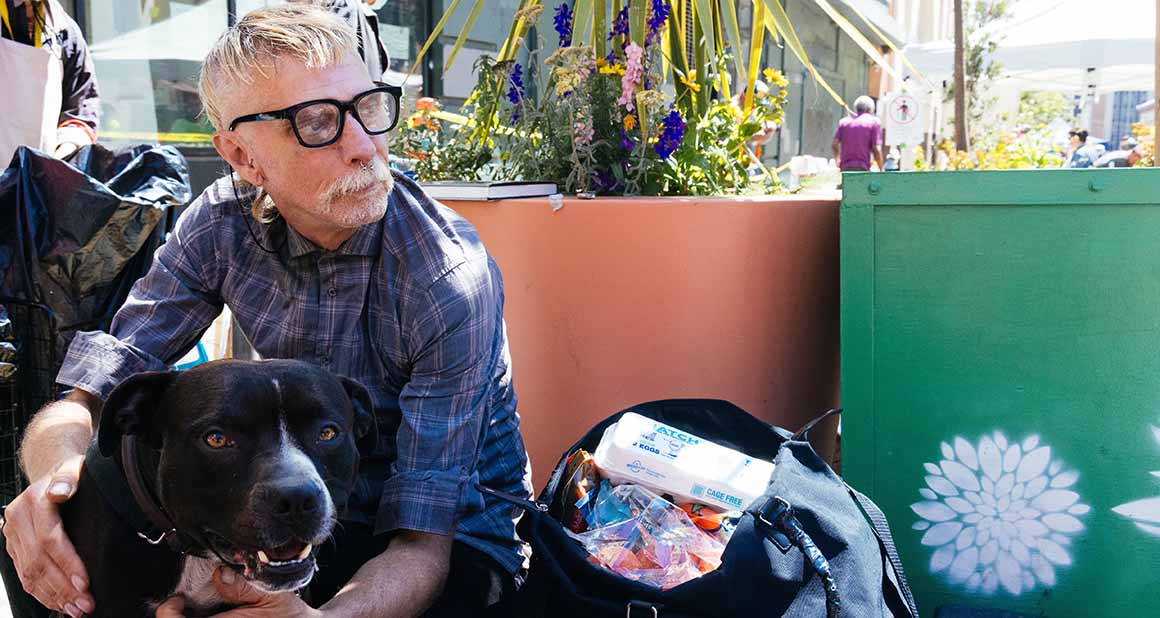
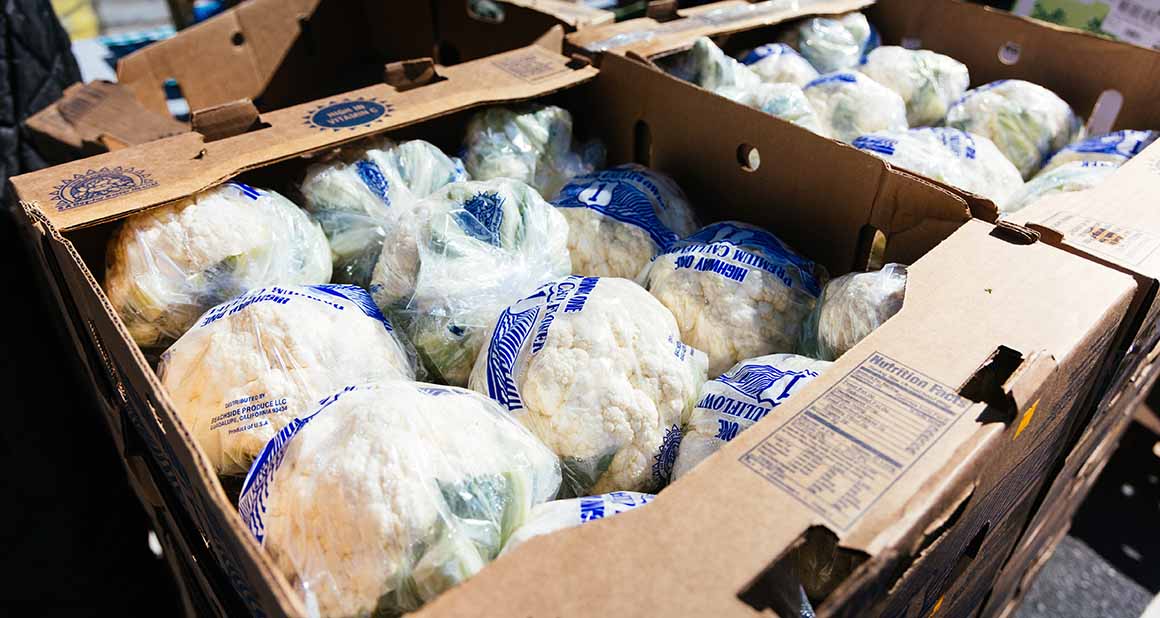 During this period, he rescued le Roi — emaciated and severely abused — from the streets. Nursing le Roi back to health became his mission. “I put him on a high protein, high caloric, high fat diet,” Todd said. With the money the pantry saved him on groceries, he was able to buy quality dog food. Fully recovered, le Roi now “picks up his own leash and walks himself. He plays basketball and body surfs,” Todd beamed.
During this period, he rescued le Roi — emaciated and severely abused — from the streets. Nursing le Roi back to health became his mission. “I put him on a high protein, high caloric, high fat diet,” Todd said. With the money the pantry saved him on groceries, he was able to buy quality dog food. Fully recovered, le Roi now “picks up his own leash and walks himself. He plays basketball and body surfs,” Todd beamed.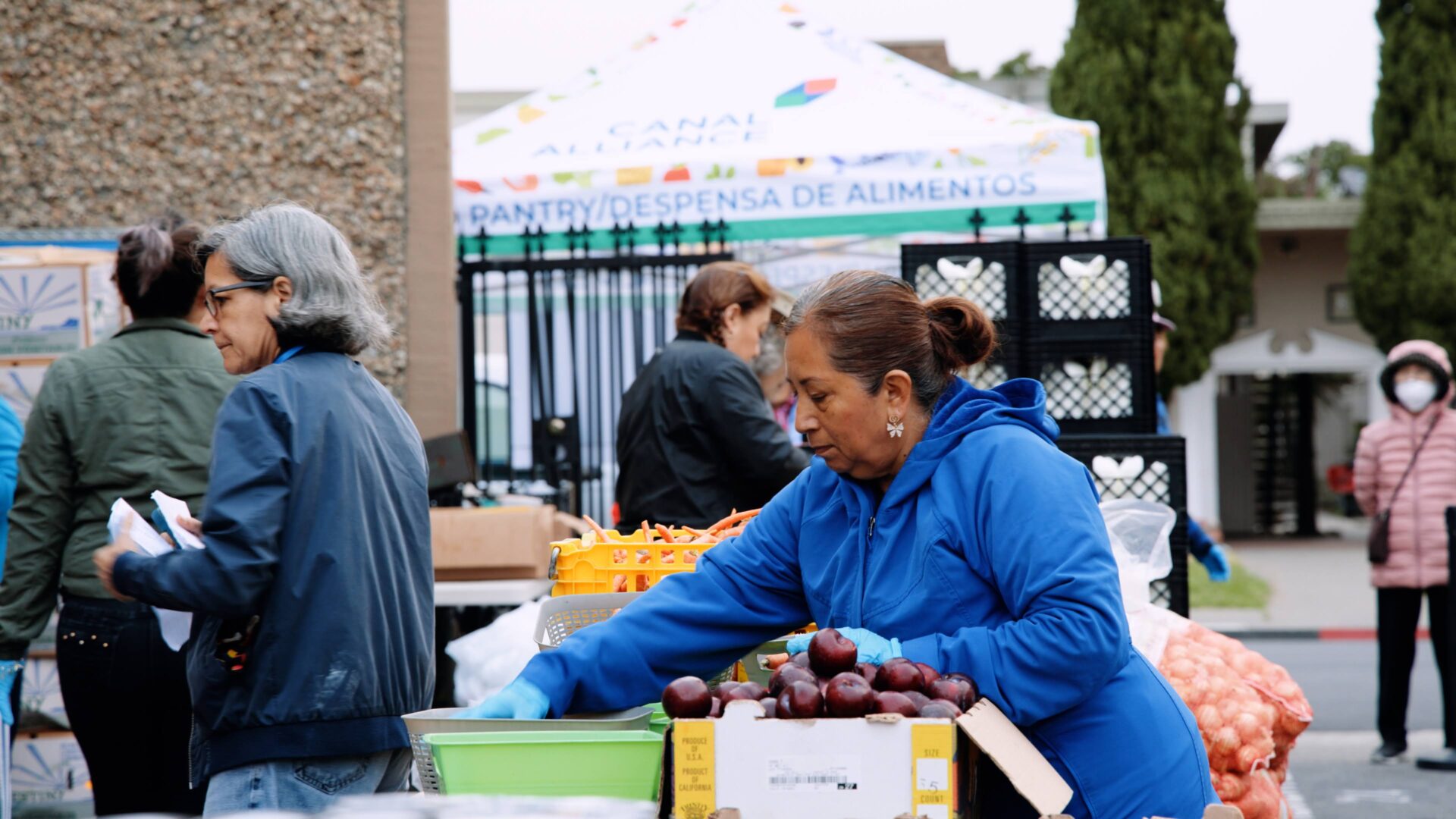
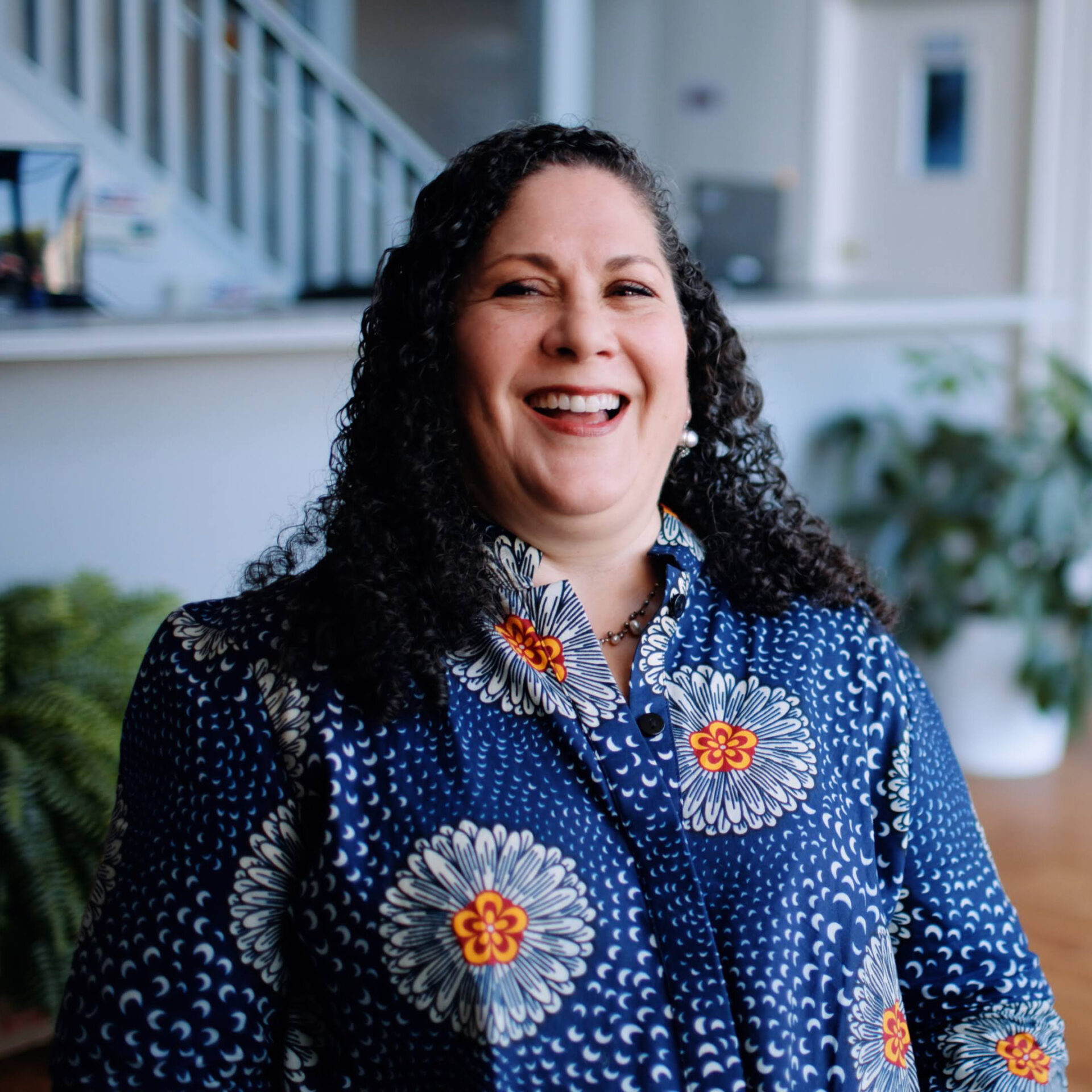
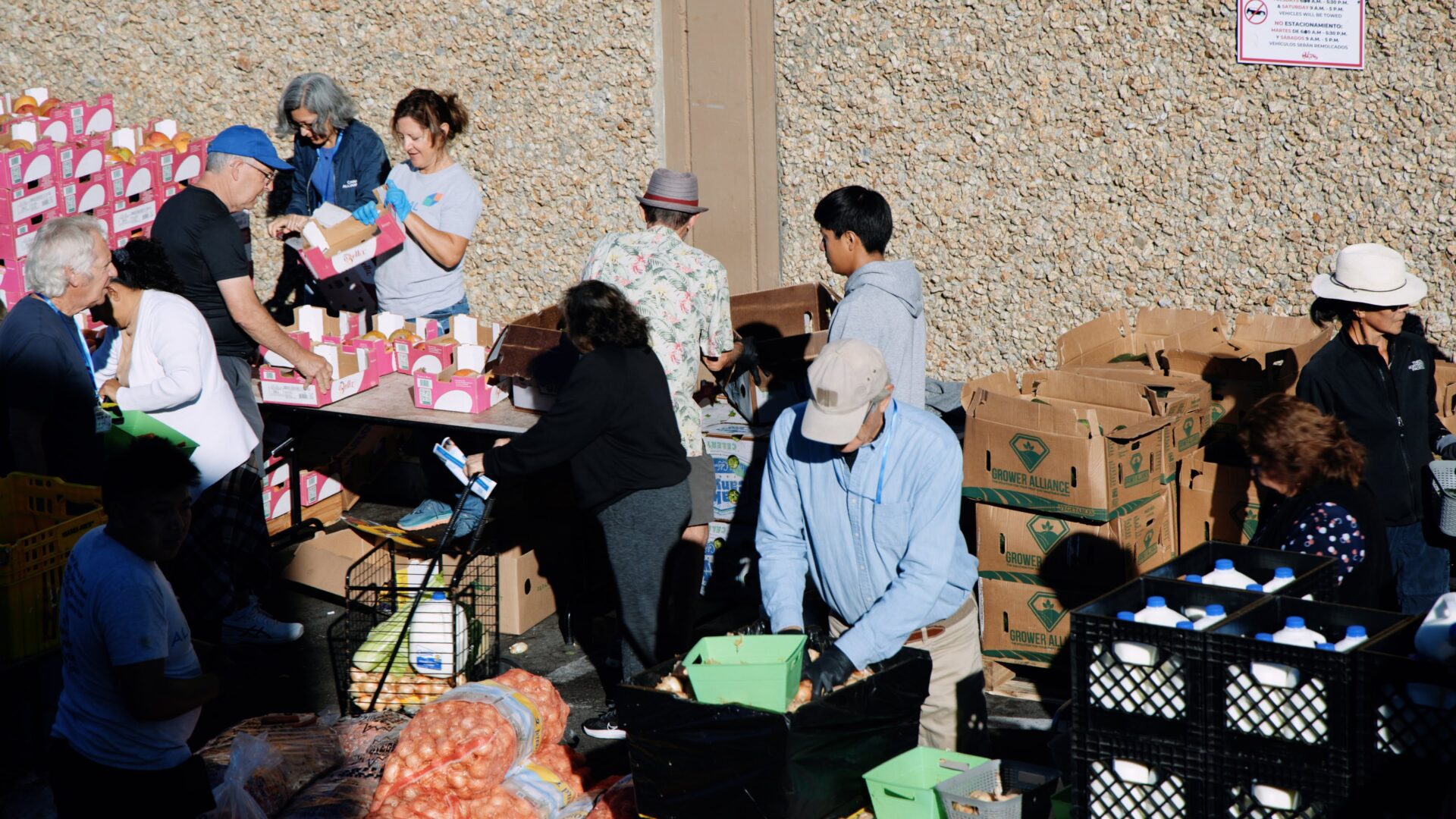

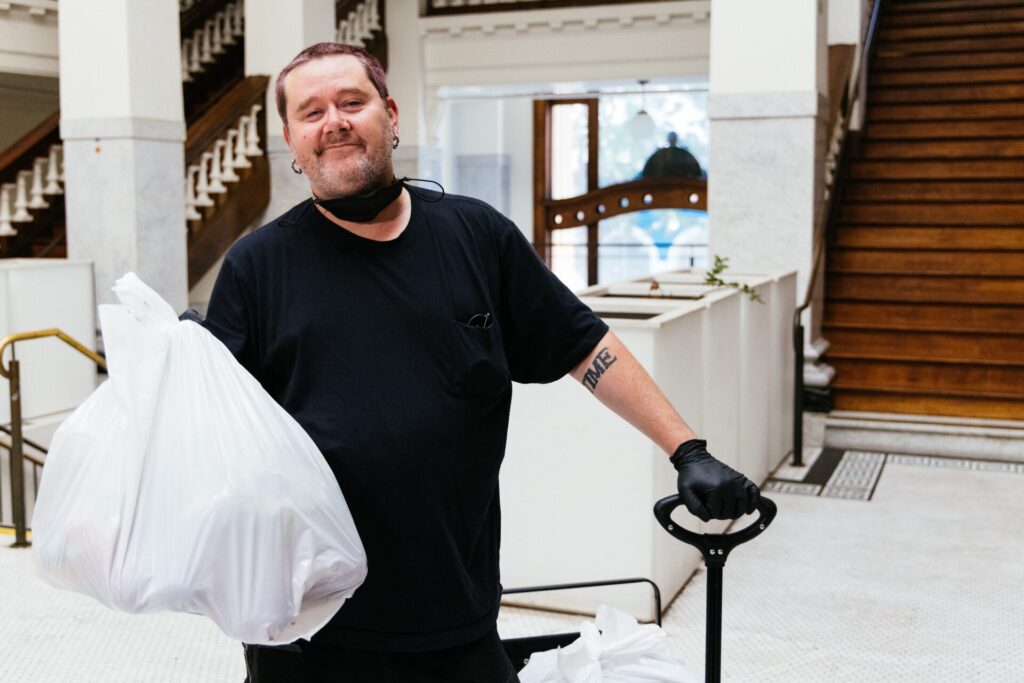
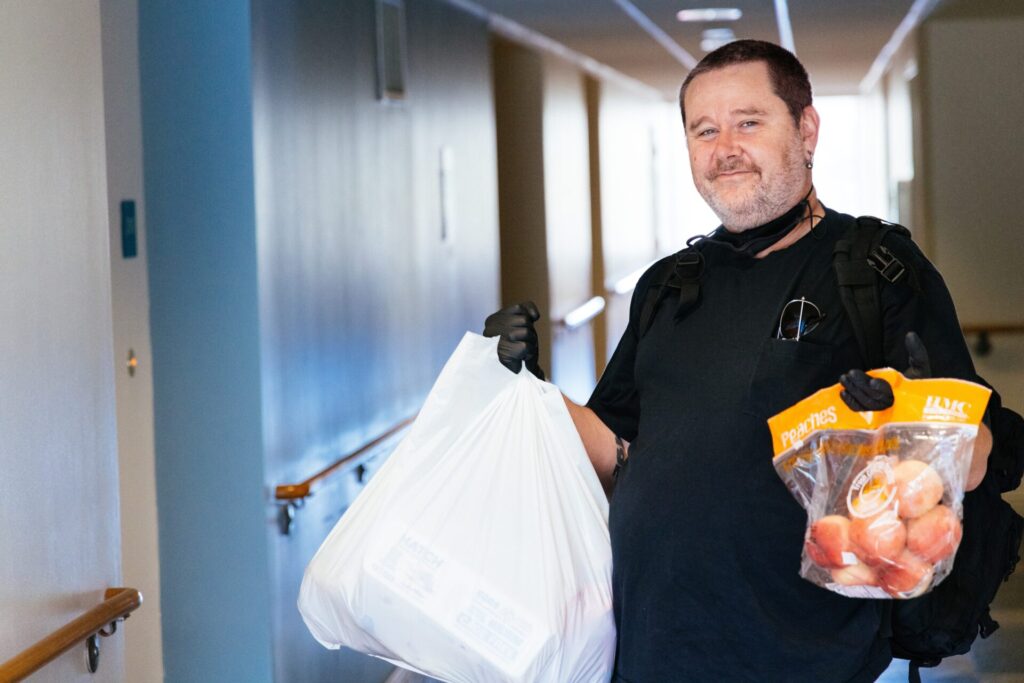
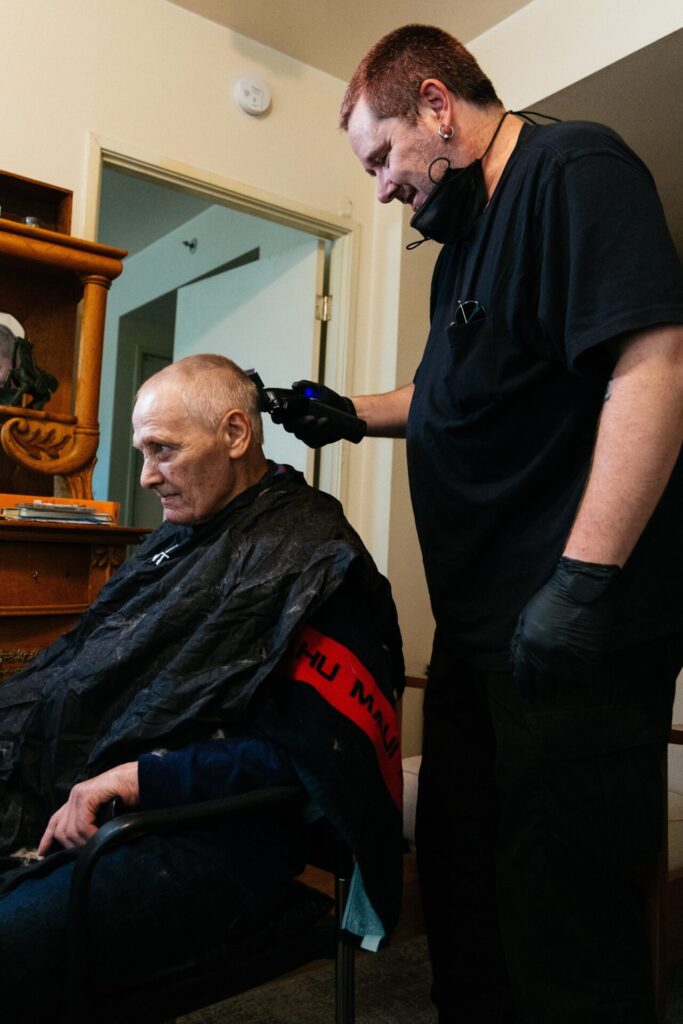
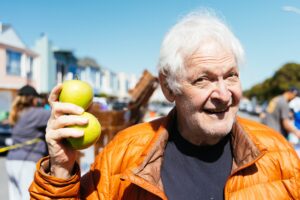 Once a week, a familiar face stops by a neighborhood food pantry in the Richmond district for an afternoon volunteer shift: coordinating the check-in process, breaking down cardboard, and helping share groceries with hundreds of neighbors each week.
Once a week, a familiar face stops by a neighborhood food pantry in the Richmond district for an afternoon volunteer shift: coordinating the check-in process, breaking down cardboard, and helping share groceries with hundreds of neighbors each week. 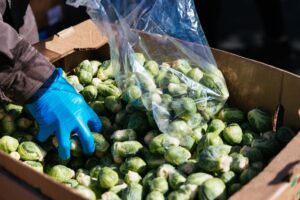 sense that “the sky was falling.”
sense that “the sky was falling.” 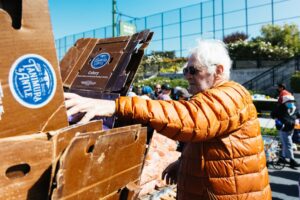 Gary lives on his pension income – so even before record inflation hit, his pre-pandemic grocery routine involved walking to a variety of stores and markets to get the best deals and buy food in bulk. The health risks of the pandemic made this routine impossible for him, but home-delivered Food Bank groceries helped Gary offset the pressure on his budget and stay nourished with fresh vegetables.
Gary lives on his pension income – so even before record inflation hit, his pre-pandemic grocery routine involved walking to a variety of stores and markets to get the best deals and buy food in bulk. The health risks of the pandemic made this routine impossible for him, but home-delivered Food Bank groceries helped Gary offset the pressure on his budget and stay nourished with fresh vegetables. 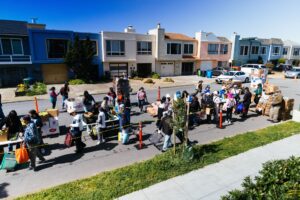 network of support – friends, neighbors and groceries from the Food Bank – Gary was able to stay healthy and safe during the height of the pandemic. But he knows not everyone had that good fortune.
network of support – friends, neighbors and groceries from the Food Bank – Gary was able to stay healthy and safe during the height of the pandemic. But he knows not everyone had that good fortune.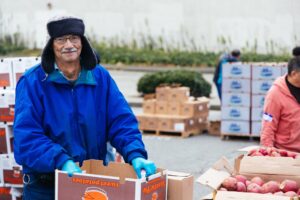 Volunteering with the Food Bank in May 2020 was really a no-brainer for Mitchell. As a retired government worker for various public health agencies, he already had a deep knowledge of epidemics and health outbreaks. Combined with the driving force of his faith, Mitchell knew he wanted to help his community out during a difficult and pivotal time.
Volunteering with the Food Bank in May 2020 was really a no-brainer for Mitchell. As a retired government worker for various public health agencies, he already had a deep knowledge of epidemics and health outbreaks. Combined with the driving force of his faith, Mitchell knew he wanted to help his community out during a difficult and pivotal time.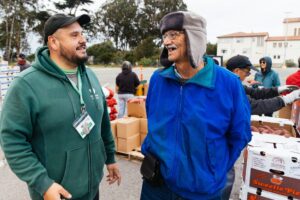
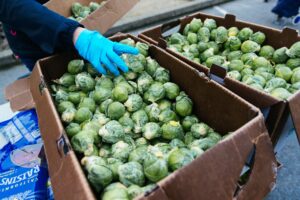 a pallet and put it on the table. And I will be 80 years old in July!”
a pallet and put it on the table. And I will be 80 years old in July!”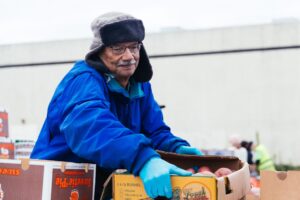 way to ensure we can continue meeting the immediate needs of our neighbors while strategically planning for more long-term, holistic solutions in the future. Thank you, Mitchell, for your dedication to ending hunger in San Francisco and Marin! We can’t do this work without supporters like you.
way to ensure we can continue meeting the immediate needs of our neighbors while strategically planning for more long-term, holistic solutions in the future. Thank you, Mitchell, for your dedication to ending hunger in San Francisco and Marin! We can’t do this work without supporters like you. After working in the warehouse and at different Food Bank pantries during the early pandemic, Nick signed up to home-deliver groceries to seniors, families with young children, folks with disabilities and other neighbors who weren’t able to make it to a traditional pantry but still needed food. His shift took him all throughout the city — including neighborhoods that he, after many years of living in San Francisco, had never been to before.
After working in the warehouse and at different Food Bank pantries during the early pandemic, Nick signed up to home-deliver groceries to seniors, families with young children, folks with disabilities and other neighbors who weren’t able to make it to a traditional pantry but still needed food. His shift took him all throughout the city — including neighborhoods that he, after many years of living in San Francisco, had never been to before. 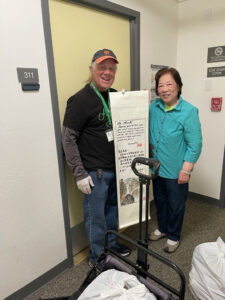 couple on his delivery route, sticks out for Nick above the rest.
couple on his delivery route, sticks out for Nick above the rest.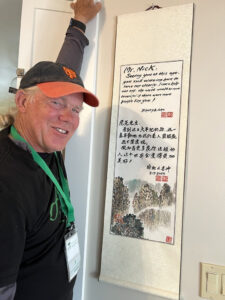 “I am humbled by all the effort behind me, by all the people at the Food Bank who make this happen. That’s the extraordinary part of this. The people who are out there on the curb in all kinds of weather, loading groceries into people’s cars, people who are working in the warehouse day after day, that’s not exactly the easiest thing to do,” he said. “I’m just the delivery boy.”
“I am humbled by all the effort behind me, by all the people at the Food Bank who make this happen. That’s the extraordinary part of this. The people who are out there on the curb in all kinds of weather, loading groceries into people’s cars, people who are working in the warehouse day after day, that’s not exactly the easiest thing to do,” he said. “I’m just the delivery boy.”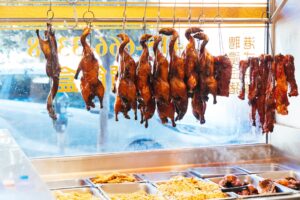 below. Next door, another restaurant dishes up steaming, juicy xiao long bao.
below. Next door, another restaurant dishes up steaming, juicy xiao long bao.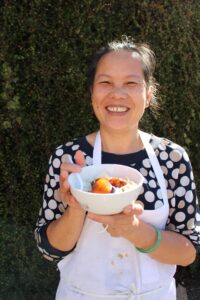 down restaurants all over the Bay Area and put her and thousands of others out of work. As a single parent raising a high schooler, putting another daughter through college, and helping support her eldest daughter at the time, Ming needed some support of her own. Ever since, these weekly groceries from the pantry near her work have remained a crucial time- and money-saver for this busy mom.
down restaurants all over the Bay Area and put her and thousands of others out of work. As a single parent raising a high schooler, putting another daughter through college, and helping support her eldest daughter at the time, Ming needed some support of her own. Ever since, these weekly groceries from the pantry near her work have remained a crucial time- and money-saver for this busy mom. 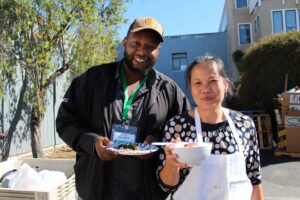 volunteers make their way over, dishing up portions buffet-style and gathering around the foldout table. Turns out, it’s not only Ming’s family that she’s bringing together over food.
volunteers make their way over, dishing up portions buffet-style and gathering around the foldout table. Turns out, it’s not only Ming’s family that she’s bringing together over food.
Share